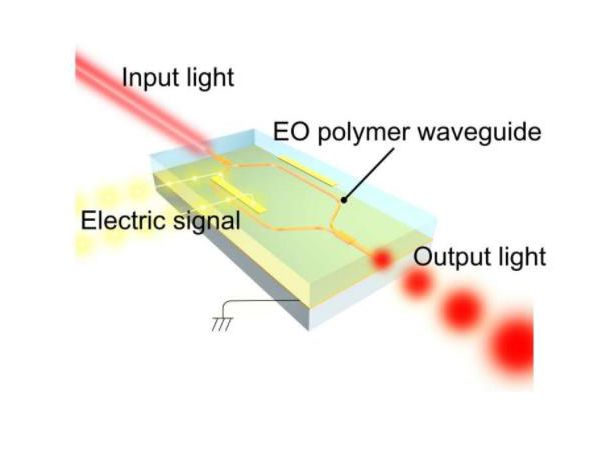A new type of organic organic organic photopolymer photomodulator was born
Time:2022-07-21
Views:4726
Recently, a research team at the National Institute of Information and Communication Technology (NICT) announced that they have successfully developed an efficient light modulator for visible light using organic organic photopolymers (hereinafter referred to as EO polymers).
It is reported that the traditional EO polymer photomodulator can work in near-infrared light (wavelength 1550 nm, etc.), but due to the large absorption loss, it cannot be used for visible light (wavelength 380 nm-780 nm). Nictt‘s EO polymer has a small absorption loss in visible light and has the large electro-optical coefficient required for light modulators.

The NICT team used the micro-machining process to design and produce the Mach-Zender interferometer structure. In addition, considering that the size of the waveguide operating in visible light is necessarily smaller than that of traditional near-infrared light modulators, they used a ridged waveguide - even if the width of the waveguide is relatively large, it can ensure a stable single-mode output. Finally, the researchers added an electrical signal to the optical modulator they developed and evaluated its modulation performance. The results show that at a wavelength of 640 nm (red), the optical modulator has a merit coefficient of 0.52 Vcm. This result is less than one-third of the traditional advantage, achieving great efficiency (small size and low drive voltage). In addition, its operating wavelength is also significantly shorter than before.
The above research team said that this EO polymer visible light modulator is expected to be applied to next-generation display devices such as stereoscopic displays and smart glasses in the future. In the next step, they will continue to advance the research and development of optical phased arrays for next-generation displays, and will also work on developing EO polymers for green and blue, further extending their applications to full-color stereoscopic displays.

